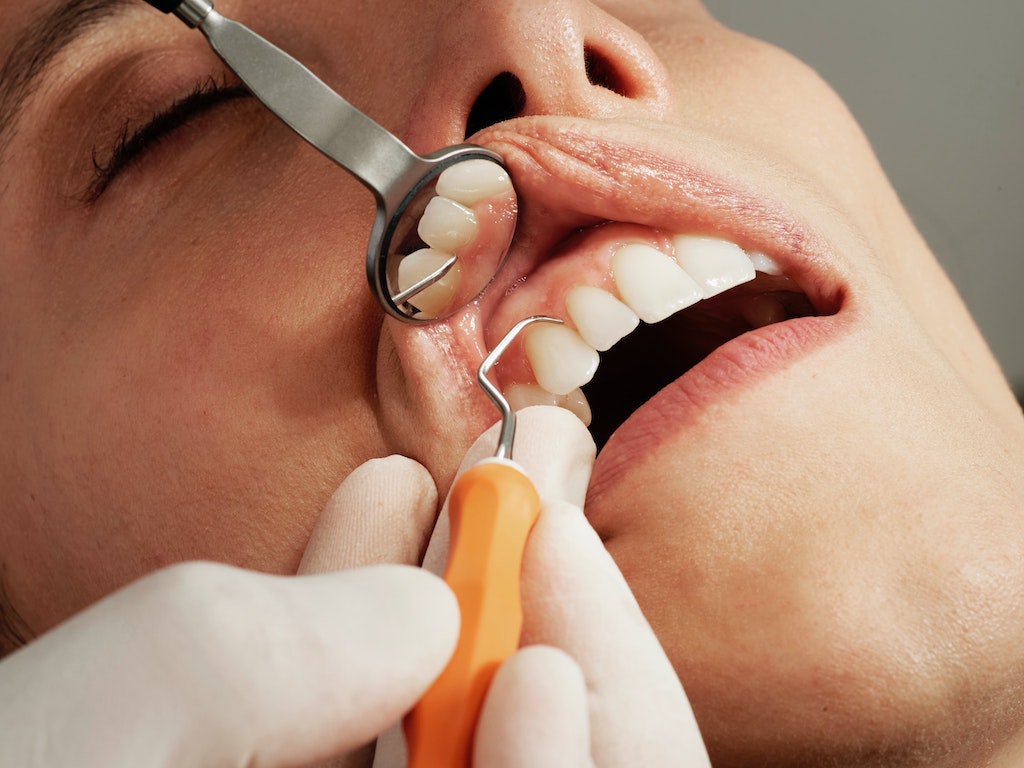Dental scale & polish
Last updated: January 12th, 2025

Gum disease is often caused by a build up of plaque bacteria. The best way to address this is by brushing your teeth two times a day.
But no matter how well you clean your teeth, there will always be hard to reach areas that are tricky to keep clean.
Plaque bacteria can accumulate in these areas. Over time it forms a tough, crusty deposit called calculus or tartar. Tartar is impossible to remove by brushing alone.
Unless removed, more plaque builds up around the tooth and under the gum line. Increasing the likelihood of gum disease. Or make it more serious.
To reduce these risks, your dentist recommends you a scale and polish. "Scale and polish" simply refers to getting your teeth professionally cleaned.
What goes on during the scale and polish?
A scale and polish can be done by your dentist or dental hygienist.
Scrape
The first scrape stage removes the deposits of plaque and tartar. In most cases an ultrasound scraper is used first. This gets rid of the bulk of the tartar. This treatment is followed by specialised hand held instruments. This treatment scrapes away any stubborn remains.
Polish
The next step is to polish the teeth to make the surface super smooth. Polishing leaves the teeth shiny and bright. So you might think polish is simply a cosmetic prodecure. Yet it also smoothes away minor imperfections and patches of rough texture on the teeth. This protects against further plaque build up.
Routine is key!
Your dentist will let you know how often you should have a scale and polish. Keep in mind that professional cleaning is an addition to a good daily oral health routine. It is not a substitute to brushing your teeth twice daily with a fluoride toothpaste! Electric toothbrushes also help in this respect.